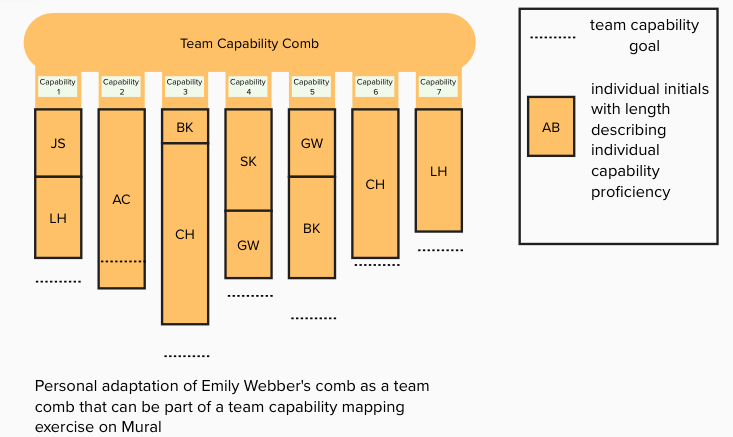Organisations need more and better cross-functional teams with varied experiences and skillsets to tackle the complex problems they face today. But whilst they can be a powerful resource when they are working well, some research suggests that 75% of cross-functional teams are dysfunctional.
We cannot just assume that cross-functional teams will succeed because they are well-meaning and generally a good idea. In fact, just like other teams, they need to draw lessons from good practice elsewhere, and also focus on identifying and developing the capabilities they need to succeed.
Simon Thule Viggers recommends some general tips for running cross-functional teams, such as keeping them small, maintaining their connection to their regular teams, upskilling them in ‘people skills,’ fostering a single growth culture, and deliberately ensuring diversity within a psychologically safe environment.These tips support innovation, healthy conflict, and growth, which are all required to solve complex problems.
But to make cross-functional teams really thrive, we need to focus on the way they are composed and the specific combination of capabilities and collaborative potential they need in each case. For example, we need to avoid an overemphasis on specialisation at the expense of collaboration, and we need to consider the impact of existing nearby organisational structures to avoid falling into collaboration antipatterns.
In her article Bridging Silos and Overcoming Collaboration Antipatterns in Multidisciplinary Organisations, Emily Webber warns that these anti-patterns can occur if, for example, organisations try to perfectly diversify in cross-functional teams with limited capability resources, or if they split into product vs engineering columns, or when they are solely led by a specific discipline. It is rare for organisations to have perfectly distributed talent throughout the organisation, which means that if we focus on having every type of specialist in every team, we will end up with some specialists being forced to be in several teams to ensure “one of each” is ever-present. This could overwhelm these specialists and prevent them from actively participating in any given team. The organisational hierarchy can also get in the way of cross-functional teams succeeding if different team members report to different parts of the business, with different goals and objectives. Instead, we should be running cross-functional teams with “shared responsibility and accountability at all levels” and accepting that some teams will not have certain ‘specialists’ present. This will allow these cross-functional teams to have both a singular focus, as their hierarchy will not get in the way, and the opportunity to focus on developing capabilities that they might be lacking.
Another neat idea in Emily’s article is the capability comb, which goes beyond the classic ‘T’ shaped competency model to capture a richer capability profile for each team member, showing shorter or longer teeth for their various capabilities. We believe that cross-functional teams need to use capability mapping to identify and address capability strengths and gaps, so this model sounds like a useful adjunct to illustrate individual capability profiles as part of team mapping exercises.

Having personal and team capability combs mapped out cold be useful for crafting tailored approaches to cross-functional team development. Since every capability comb will be different, a one-size-fits-all approach to capability development is unlikely to be effective.
Maile Timon recently outlined some arguments for personalised L&D as a way to embrace diversity, nurture talent, adapt to learning preferences, boost employee engagement and address skills gaps. To tailor training, we need to assess individual needs, curate learning paths, encourage self-directed learning, leverage tech and create easily consumable learning content.
We typically run team retrospectives that include collaborative reflection on capability development, but it is paramount that individuals within teams also spend time reflecting on their personal learning needs. Adapting a long-term goal-setting approach, learning can be viewed as at least a two-step process of action and reaction. We need to take action, “perform some learning activity” and react “see if this learning got us further, and decide to continue it or do something else”. Only then can we continue to learn individually, whilst also feeding into the development of our team capability comb.
To prevent our cross-functional teams from becoming dysfunctional, and to reap the benefits of these teams in solving complex problems, we need to follow some established good practices in advancing the team’s capability roadmap, but we also need individual contributors to simultaneously own their development.
If we agree that the highest-performing teams are almost always characterised by the highest levels of psychological safety, then we need to challenge the surrounding hierarchy in our organisations and encourage cross-functionality wherever appropriate. And we need to have an honest conversation about all our capabilities to ensure that our team’s capability matrix is truly representative; but we also need to focus on our own ‘value proposition’ in the team so that we contribute to it’s growth through individual learning and development.
-Cover Image generated with Image Creator powered by DALL-E

